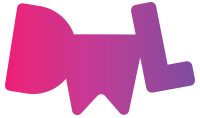Design teams create designs that deliver value to businesses and clients. However, measuring the performance of a design team can be challenging.
This is obvious when you compare design teams to other departments like sales, customer service, or marketing.
Design OKRs (objectives and key results) make this process easier while allowing design teams to align their goals, objectives, and outcomes with those of other teams.
Understanding OKRs for Design Teams
OKR stands for objectives and key results. Objectives are what the design team wants to achieve, and they should be achievable, no matter how challenging they are. They should be time-bound, meaning there should be a specific timeline or deadline for achieving them.
Key results, on the other hand, encompass the different ways design teams measure progress toward achieving their objectives. They should be trackable and measurable, and set such that their achievement contributes to meeting the set objectives.
Design teams can also use an OKR template to outline what they need to do to achieve their goals. For example, a design team looking to improve brand consistency can update a business’s landing page or social media assets with new branding guidelines to achieve this objective.
Best Practices When Creating OKRs for Design Teams
Ideally, each design OKR should include one or two objectives and each should have three to five key results. Any more than this, and the process becomes more complicated. Design work is already qualitative, so setting goals and objectives is already difficult enough, and there is no need to make things more complicated.
Once design teams have answered what they want to achieve, how they will achieve it, and what results will tell them they have achieved the desired outcome, they can use an OKR template to align team members around all three.
Team members should also be allowed to add notes to the OKR template. By doing so, they can share progress with other team members outlining what they have done, what they have achieved, and what is left. When doing so, it is also important to outline how different activities have contributed to the overall objectives and to attaining the desired key results.
Creating Strong Design Team OKRs
Design teams should start by identifying the high-priority goal that will become the key objective. It will also be a starting point that members can congregate around, while also giving them the direction they should head.
The next step is identifying the key results. Each result should tie into a specific activity, such as creating new brand assets. The measurable numbers for each result will come from real-world results, so having ways to measure quantitative metrics is crucial.
Lastly, the team leader should track and report the numbers to team members. Weekly check-ins are essential for tracking progress, tweaking plans, and identifying issues that make achieving key results and meeting the set objectives difficult.
Even though their work is qualitative, design teams should find ways to connect their work with measurable results. OKRs can help with this process and can be combined with other tools to provide the crucial direction teams should follow and the results they should aim for.




